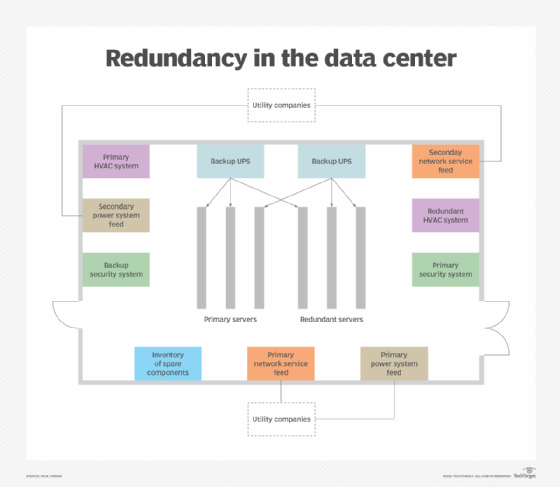Just How to Deal With Redundancy Pay If Company Goes Bust: Key Details for UK Workers
Just How to Deal With Redundancy Pay If Company Goes Bust: Key Details for UK Workers
Blog Article
Examining the Interaction Between Firm Redundancy and Business Versatility for Future Growth
In the vibrant landscape of today's business world, the detailed connection in between firm redundancy and business flexibility emerges as a vital factor for sustained development and success. Firms frequently deal with the difficulty of striking a fragile equilibrium in between keeping a degree of redundancy to minimize dangers and cultivating flexibility to react promptly to the ever-evolving market needs.
Importance of Company Redundancy
Company redundancy is an important element that enhances organizational strength and reduces functional threats. By including redundancy procedures within the business framework, business can much better stand up to unpredicted disturbances and variations in the company setting. Redundancy works as a calculated buffer, allowing companies to adjust and react successfully to unforeseen obstacles without endangering necessary procedures.
One key aspect of the relevance of firm redundancy is its function in guaranteeing continuity during times of situation. When confronted with unexpected changes or emergency situations, repetitive systems, resources, or employees can action in to preserve important functions and protect against extensive disruptions. This connection not only safeguards the company's online reputation and customer trust yet also decreases monetary losses and operational downtime.

Techniques for Business Flexibility

Another crucial method is purchasing modern technology and infrastructure that can sustain flexibility and scalability. Carrying out electronic devices, automation, and information analytics can simplify operations, improve efficiency, and offer useful insights for notified decision-making. Furthermore, producing versatile organizational structures that enable quick modifications to market dynamics and client requirements is crucial for staying competitive in a rapidly evolving atmosphere. By proactively identifying potential disruptions and possibilities, companies can proactively adjust and thrive in an ever-changing organization landscape.
Balancing Redundancy and Adaptability
Achieving an unified equilibrium in between operational redundancy and organizational view it now flexibility is vital in navigating the intricacies of a dynamic company environment. Redundancy within a firm offers a safety web, making sure connection and security in procedures. Nevertheless, an excess of redundancy can bring about ineffectiveness and impede flexibility to altering market problems. On the other hand, business versatility permits firms to react promptly to exterior interruptions and take new chances. Striking the ideal balance between redundancy and flexibility is a delicate procedure that needs a deep understanding of the company's goals, market characteristics, and risk tolerance.
To accomplish this balance, business need to carry out routine evaluations of their operations to determine areas where redundancy is required for danger mitigation and where versatility can drive advancement and development. Carrying i was reading this out versatile structures, promoting a culture of continuous learning and improvement, and urging open interaction throughout all degrees of the company are vital approaches to integrate redundancy and versatility efficiently. By lining up these two critical components, firms can position themselves for sustainable growth and success in an ever-changing company landscape.
Case Researches on Adjustment Success
In analyzing circumstances of successful business adaptation, it comes to be apparent that the interaction in between functional redundancy and flexibility is a specifying aspect in forming durable services. A DVD rental solution, Netflix showed remarkable adaptability by transitioning into a streaming platform when digitalization interfered with the industry. These case studies underscore the importance of operational redundancy coupled with organizational adaptability in fostering lasting development and competition.
Building Resilience for Future Growth
Building resilience for future development requires a critical placement of operational procedures with market dynamics and arising patterns. Firms should adjust to altering environments by promoting a society of versatility, innovation, and continual enhancement.
In addition, promoting solid connections with stakeholders, such as consumers, employees, distributors, and the community, is necessary for weathering unpredictabilities and maintaining trust and assistance throughout rough times. Reliable communication and transparency play an essential role in building strength, as they aid promote and align expectations cooperation in navigating uncertainties.
Moreover, companies require to prioritize knowing and advancement campaigns to upskill staff members and equip them with the required devices to adapt to altering situations. By spending in their labor force, companies can enhance their versatility and dexterity, inevitably reinforcing their durability for lasting future development.
Conclusion

In the vibrant landscape of today's business world, the detailed relationship in between business redundancy and business adaptability arises as a crucial element for continual development and success. Companies commonly face the challenge of striking a fragile equilibrium in between maintaining a level of redundancy to alleviate risks and promoting flexibility to respond swiftly to the ever-evolving market demands.To accomplish this equilibrium, firms need to conduct routine evaluations of their procedures to recognize locations where redundancy is required for danger mitigation and where flexibility can drive development and development.In conclusion, the interaction between business redundancy and organizational flexibility is essential for future growth. Building resilience with a mix of redundancy and adaptability will certainly make sure that firms are prepared for the obstacles of the future.
Report this page